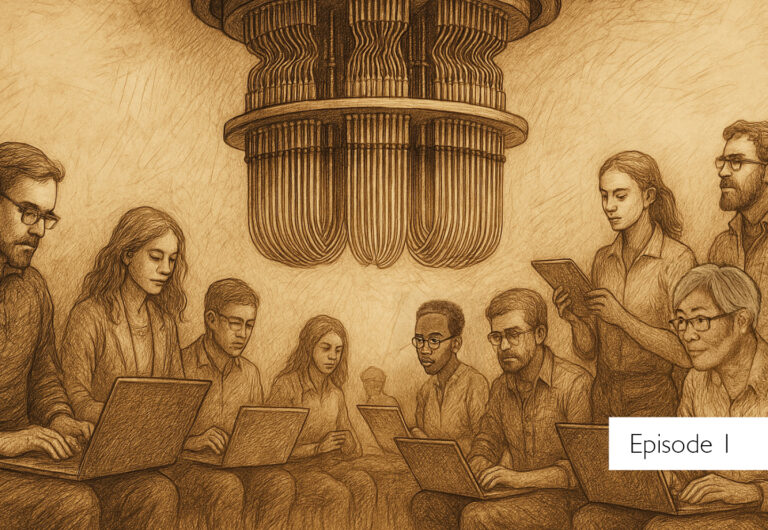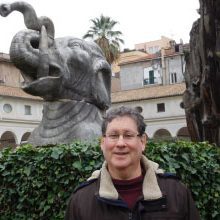Quantum Computing: Open Source Communities Tackle Unique Challenges, Part 1

The challenges of building a community around free and open source software are the topic of numerous books and articles. I chose quantum computing for this article because open source projects face extra barriers there. Quantum computing requires an advanced knowledge of physics, so the set of people who can design and code algorithms is quite tiny.
The quantum community is also scattered around the world, as we’ll see from the many geographic locations that turn up in this article. Additionally, members of this community are highly mobile. For instance, alongside Japanese researchers, there are Western researchers who come to Japan for postdoctoral fellowships and stay a while.
Finally, given the excitement and buzz around the field, those who can implement algorithms are in high demand.
These traits of a small but growing, interconnected community are common to many projects in their early stages. (However, according to Amir Naveh of Classiq, quantum computing is advancing to the point where algorithms can be described in natural language and simulators make coding more open to the average programmer.)
This is the first article in a two-part series where I interview leaders from three thriving open source projects to find out how they build and maintain their communities. This first part covers classiq and OQTOPUS, while Part 2 will cover QuTiP and offer some concluding thoughts.
classiq
The classiq library, according to its GitHub description, is the largest collection of quantum algorithms and applications. Started by the Classiq company and released under the MIT license, the library benefits from more than 200 contributors around the world.
I talked to Amir Naveh, co-founder, CPO, and head of quantum algorithms at Classiq, about how they built this community.
The Company and Its Strategy
Classiq makes a compiler and IDE for quantum computing. It currently supports about ten quantum computing platforms, such as IBM and IQM, as well as four platforms that are currently simulators, including Intel and NVIDIA. Amir believes Classiq to be the largest company focused on quantum software, with about 70 people and a plan to grow to 120 over the upcoming year. Thanks to a recent venture investment, they have 170 million dollars and more than 20 enterprise customers, including a lot of the leading users of quantum computing.
Classiq’s business strategy is a common one that I call „closed core.“ Their compiler and IDE are their core products, and these remain proprietary. The company knows that by building an excellent open source library of tools and algorithms, they create a larger market for their compiler as well as a reputation for high quality and strong relationships with customers.
In particular, Naveh says, they have a number of mature solutions with suites of applications for various vertical industries—finance, pharma, logistics, cybersecurity, etc.—that they build through collaborations with customers. Researchers and academic institutions also use Classiq tools. No single vendor can do everything, though, and open source permits the solutions to continue meeting customer needs. The libraries are platform-independent, running on every hardware platform the compiler supports.
How They Expanded Their Developer Base
Classiq invested a lot of effort from the start in recruiting contributors to the open source libraries. While the company is headquartered in Tel Aviv, Naveh tells me that a lot of early contributions have come from southern Asia. To bring in contributors from North American and Europe, Classiq looked at more than 130 leading universities in the quantum area, and reached out to relevant researchers in departments of strategic interest to the company.
During their first year, Classiq encouraged participation by accepting a lot of substandard contributions and working closely with the contributors to bring them up to the necessary quality. In their second year now, the company can be more choosy and reject contributions that don’t meet their requirements.
Thus, a strategic focus on community-building has allowed Classiq to carry out their business plan while seeding a massive open source project of benefit to the world. The company keeps firm control over the project, by assigning their staff to approve each contribution before accepting it.
OQTOPUS
OQTOPUS, a project launched by the University of Osaka, is also a comprehensive software platform. I exchanged email with Takafumi Miyanaga, a software engineer and researcher at the Center for Quantum Information and Quantum Biology at the university, to learn how they built their community with GitHub contributors from a range of organizations.
Collaborative From the Start
Miyanaga says that this project „grew out of an effort to unify separate cloud software stacks that had been developed to operate several early superconducting quantum computers in Japan.“ The University of Osaka was developing its own project in 2023, while building a separate quantum at Fujitsu. The university then worked with RIKEN, described as „Japan’s largest and most comprehensive research organization for basic and applied science„, to incorporate their work with the other two projects to make OQTOPUS in September 2024. The official release took place in March 2025 under the Apache License 2.0.
Additional industry partners include TIS Inc. and Systems Engineering Consultants Co., Ltd. (SEC), based in Tokyo.
In choosing to make the project open source, Miyanaga cites reasons similar to those driving many other free software projects: open source lowers barriers to use, accelerates development, and helps to create „a global talent pipeline“ in what he calls „a currently under-served domain.“ He adds, „The University of Osaka is deeply involved across architecture, development, operations, and community coordination.“
But I see an additional logic between choosing an open source approach. If OQTOPUS were proprietary, who would own it? Would the University of Osaka or RIKEN be able to derive financial profit from OQTOPUS? Would Fujitsu want to manage it? Software that’s of interest to so many people and organizations is naturally a shared commons.
Fujitsu, the University of Osaka, and RIKEN are part of a new large-scale collaboration on quantum systems.
Community Involvement and Funding
OQTOPUS actively recruits members through the Quantum Software Research Hub (QSRH) at the University of Osaka, and signs up new contributors in the hub’s research activities. The QSRH is a consortium coordinated by a professor appointed by the university. Miyanaga writes, „Partner organizations contribute members to joint research initiatives under this consortium framework, with each researcher or engineer responsible for specific technical areas.“
Funding comes from the University of Osaka and R&D contracts. Developers working for industry partners contribute their work to the open source project, and contributions to the GitHub repository are welcome from all.
OQTOPUS also attracts developers through its value as a research project. One paper describing OQTOPUS has just been released („A Practical Open-Source Software Stack for a Cloud-Based Quantum Computing System„) and OQTOPUS also underlies another recent research paper („Auxiliary-field quantum Monte Carlo method with quantum selected configuration interaction„).
Seeking Continuity and Sustainability
Some free and open source software projects fail to prepare for sustainability, being too comfortable with the current group of developers. The team of committers at OQTOPUS are very conscientious to nurture new talent and make sure that the set of contributors and committers represents the diversity of the user base.
Experienced contributors who demonstrate “sustained engagement and technical trustworthiness” can become code reviewers and committers, and represent many different companies and institutions. Miyanaga writes, “We aim to balance academic responsibility with open collaboration.” The team is currently enjoying a lot of growth, with interest from new organizations.
Roadmap and feature decisions within OQTOPUS are made by the core contributors. Miyanaga explains the governance process as follows: “Core contributors hold biweekly meetings to review tasks, coordinate development, and discuss roadmap priorities. The direction of the project is shaped through consensus among active contributors, regardless of institutional affiliation.” Plans for further enhancement of OQTOPUS include „supporting various quantum hardware platforms, improving contributor onboarding, and participating in efforts to standardize interfaces for quantum system software.“
